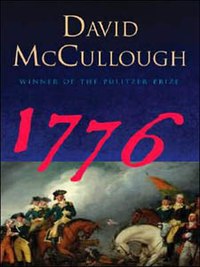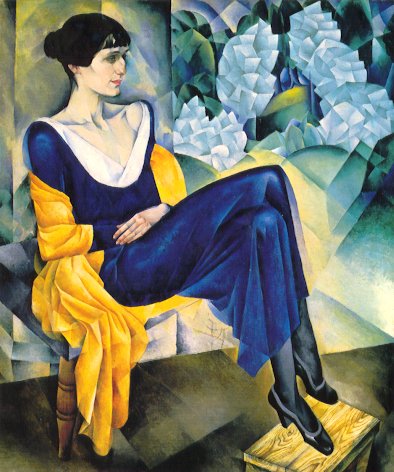《中國歷史人物論集》由”中研院中美學人社科合作委員會” 台北:正中 1973
翻譯自Arthur F. Wright and. Denis Twitchett, eds., Confucian Personalities (StanfordUniversity Press) ,1962
《中國歷史人物論集 耶律楚材(1189-1243):佛家的理想主義和儒家的政治》台北:正中,1973,頁257-97 (翻譯自Arthur F. Wright and. Denis Twitchett, eds., Confucian Personalities (Stanford University Press) ,1962)
Confucian Personalities. Ed. Arthur F. Wright and Denis Twitchett [Stanford Studies in the Civilization of Eastern Asia; Stanford University Press, 1962]. Pp.x, 411. US$8.75.
《中國歷史人物論集》
目次
前言
譯者小序
價值角色人物 Arthur F. Wright, "Values, Roles, Personalities" 1-27
中國傳記的幾個問題 28-45
顏之推 (531-591後): 一個崇佛的儒者 46-78
唐代文人集傳 79-103
陸贄(754-805):皇帝的顧問和朝廷的官吏 104-61
王庚武“馮道—論儒家的忠君思想”頁162-98。
岳飛傳:一個傳奇人物的傳奇故事 199-218
朱熹的政治生涯一項內心衝突 219-56
耶律楚材(1189-1243):佛家的理想主義和儒家的政 257-97
賈似道(1213-75) 一個邪惡的亡國承相298-324
淡於政治而熱衷藝術的董其昌(1555-1636) 355-408 Nelson Wu, “Tung Chí-cháng: Apathy in Government and Fervor on Art”
康有為(1859-1927)—他的知識背景和早期思想 409-40
廖平及其與儒家歷史的脫節441-52-----
耶魯中國史教授芮瑪麗(Mary C. Wright)指點迷津,她勸他研究中國史。以《中國保守主義的最後據點:同治中興,一八六二─一八七四》一書揚名學界的芮瑪麗和她的丈夫芮沃壽(Arthur F. Wright),同為耶魯中國研究的兩張王牌,與哈佛的費正清鼎足而立。芮氏夫婦俱已於七十年代辭世。
Confucianism in Action - Google 圖書結果
David S. Nivison, Arthur F. Wright - 1959 - History - 390 頁AN ANALYSIS OF CHINESE CLAN RULES: CONFUCIAN THEORIES IN ACTION The purpose of this paper is to examine the clan rules in Chinese genealogies from the ...
The Confucian persuasion - Google 圖書結果
Arthur F. Wright - 1960 - History - 390 頁Arthur 7. Wright SUI YANG-TI: PERSONALITY AND STEREOTYPE Yang Kuang (569-618), who ruled as Yang-ti of the Sui, is of interest to the student of Chinese ...
  |
一、作者姓名與著作名稱:
NIVISON, David and Arthur Wright, eds. Confucianism in Action. Stanford: Stanford University Press, 1959. (尼米森與賴特 (編),《儒家思想之實踐》)
二、篇幅:共390頁 (序言2頁,目錄1頁,正文331頁,註釋39頁,索引16頁)
三、主題:儒家思想之考察,儒家思想於社會、制度層面影響之分析,儒家思想於日本德川、明治時代發展之考察
四、關鍵辭:儒家思想、日本德川時期、日本明治時期、范氏義莊、中國監察制度、和珅、元田永孚
五、年代:先秦至民國,日本德川、明治時期
六、主要論點:請見尼米森之〈導論〉。
七、目次:
第一篇尼米森,〈導論〉(David S. Nivison, “Introduction.”)
第二篇狄百瑞,〈新儒家思想之一些共同傾向〉(Wm. Theodore De Bary, “Some Common Tendencies in Neo-Confucianism.”)
第三篇施華慈,〈儒家思想之諸極〉(Benjamin Schwartz, “Some Polarities in Confucian Thought.”)
第四篇劉王惠箴,〈中國族規分析:儒家理論之實踐〉(Hui-Chen Wang Liu, “An Analysis of Chinese Clan Rules: Confucian Theories in Action.”)
第五篇推傑,〈范氏義莊:公元1050年至1760年〉(Denis Twitchett, “The Fan Clan’s Charitable Estate, 1050-1760.”)
第六篇楊慶堃,〈中國官僚行為之特徵〉(C. K. Yang, “Some Characteristics of Chinese Bureaucratic Behavior.”)
第七篇劉子健,〈中國史料編纂中之官僚分類〉(James T. C. Liu, “Some Classifications of Bureaucrats in Chinese Historiography.”)
第八篇賀凱,〈儒家思想與中國監察制度〉(Charles O. Hucker, “Confucianism and the Chinese Censorial System.”)
第九篇尼米森,〈和珅及其控訴者:十八世紀之意識型態與政治行為〉(David S. Nivison, “Ho-shen and His Accusers: Ideology and Political Behavior in the Eighteenth Century.”)
第十篇列文森,〈遺跡之暗示性:儒家思想與末代君主政體〉(Joseph R. Levenson, “The Suggestiveness of Vestiges: Confucianism and Monarchy at the Last.”)
第十一篇 霍爾,〈日本德川時代之儒師〉(John Whitney Hall, “The Confucian
Teacher in Tokugawa Japan.”)
第十二篇 史佛利,〈元田永孚:明治天皇之儒家國師〉(Donald H. Shively,
“Motoda Eifu: Confucian Lecturer to the Meiji Emperor.”)
八、內容摘要:
第一篇為尼米森所撰之〈導論〉(David S. Nivison, “Introduction.”)
「儒家」究竟為何?這是作者首先提出的問題。作者表示,若要能針對此問題回應,就必須先指出何者為「非儒家」。首先,尼米森做出「儒家的」與「中國的」這 兩者的分別,他認為,道家、法家、某些佛教派別等都可以稱為「中國的」,可是絕非儒家。再者,尼米森強調「新儒家」和「儒家」的思想,都包含了多種互相衝 突之詞,而此多樣性多是由社會、政治現實所引起,並且是為了適應人類不同問題和活動而生。尼米森表示,這些多樣性的探究,正是此論文集所包括的文章所探討 的主題。
第二篇為狄百瑞所撰之〈新儒家思想之一些共同傾向〉(Wm. Theodore De Bary, “Some Common Tendencies in Neo-Confucianism.”)
本文旨在試圖對「新儒家」作一定義與描述。作者提出,在中國和日本,儒家思想與政治力量間,是有緊密之關係。然而儒家思想之角色卻絕不僅作為「政府之官方 工具」而已。作者在舉出一些例子後表示,事實上中國統治者多半在意儒家思想是否「危及統治的態度」,而較不在意的是與政治態度無關、純粹思想上的不同立 場,並且於日本,情況亦類於此。由此可見,於傳播、維繫、構作儒家思想上,中國或日本皇室所扮演之角色,可以說並不重要。舉例來說,新儒家思想於士大夫階 層興起之時,恰為朝廷不悅其發展之時:於南宋,朝廷並未支持程朱哲學,然而程朱哲學卻發展快速。由此可見:新儒家思想之內部實自有改造、自我維繫之力量與 內在生命,以致於可與國家控制力量相抗衡。
然而新儒家思想生生不息力量之底層又為何?作者認為「基礎論」乃為新儒家思想之根本,此外,新儒家思想亦有復興面臨衰亡命運之信念體系之傾向,亦即有復古 傾向。除此之外,「具歷史傾向」、理性主義以及人本主義亦為新儒家思想之特徵。不過,在中國和日本,雖然儒家具有理性主義以及經驗主義之特徵,然而此二特 徵卻未獲進一步發展。究其原因,概是因為儒家思想中的理性特質,事實上比較傾向於道德秩序,並且與其說「格物」乃是指與自然科學相關之實驗或探究,不如說 「格物」實為對道德問題之探究。
第三篇為施華慈所撰之〈儒家思想之諸極〉(Benjamin Schwartz, “Some Polarities in Confucian Thought.”)
本文主旨在於以「極點」此一隱喻處理儒家思想之許多重要主題。作者認為理解儒家思想時,不能以二分法對儒家思想進行處理,因為對大部分的儒家思想家而言,思想中的概念並非相對,而是互補且不可分離的概念。然而,隨著時代演進,思想家亦開始體認此等概念間所存在之緊張關係。
舉例來說,於《大學》與《論語》中,我們雖可見「修身」、「治國平天下」乃一個不可分割之整體的兩個構成部份,但是後期學者卻開始質疑「修身」是否即可以 達到「治國平天下」?而此即是北宋時期王安石與政敵爭論之焦點。然而無論是王安石或是其政敵,皆未拒棄「修身」、「治國平天下」的任何一極,而僅是指控另 一方的偏於一極。
除此之外,作者還舉出「內」與「外」、「知」與「行」兩組在儒家思想中的兩極概念。但是作者認為,這些概念雖然兩極,之間卻仍然不是互相對立的關係。
第四篇為劉王惠箴所撰之〈中國族規分析:儒家理論之實踐〉(Hui-Chen Wang Liu, “An Analysis of Chinese Clan Rules: Confucian Theories in Action.”)
本文主旨在於由儒家思想之實踐層面探討中國族譜中之族規。首先,作者認為族規的目的在於,讚揚有德行為與譴責偏差行為,且強調的重點為:一、強調親族有序、和諧之理想,二、強調親族間恰當身分關係之遵守。
作者繼而探討族規所含之價值架構。作者首先指出:族規中之價值架構乃教義與實際經驗調和後之產物,至於其調和過程則可分下列四面相:一、族規之意識型態構 成成分。作者認為在此等意識型態之構成成分中,儒家教義並非唯一構成成分。二、國家之影響。三、士大夫之影響。四、族規對社會習俗之反應。
然而族規中之儒家教義又為何?作者指出,於族規所引用之古籍中,最重要者,非《禮記》莫屬,至於其他諸如《儀禮》、《周禮》、《爾雅》等論「禮」之古籍,以及《孝經》、《論語》等,亦屬重要。
作者繼而提出,清廷對宗族所採取的態度為:希望宗族於既有架構下促進道德教育,卻不樂見宗族具有太大影響力。因此對宗族大體來說是為接受。
至於士大夫於族規中對儒家價值之詮釋,則乃結合理論與實際層面之結果。對此,吾人可考量下列五個領域中士大夫對儒家價值之詮釋:父母與子女之關係、兄弟間 之關係、婚姻關係、宗族關係、社群關係與朋友關係。值得一提,作者提出對「孝」此一價值,族規另有現實主義之考量:父母之權威雖至高無上,然卻非絕對之權 威。
作者的結論為:以族規為起點,吾人可見一端為族規對儒家理論之修正,至於另一端則為族規對一般人民之影響。此處,作者舉出Redfield所主張之「大傳統」與「小傳統」來說明。
第五篇為推傑所撰之〈范氏義莊:公元1050年至1760年〉(Denis Twitchett, “The Fan Clan’s Charitable Estate, 1050-1760.”)
本文係以中國「宗族共有財產」為探討焦點。於近代,宗族共有財產乃維繫宗族統一以及宗族成員社會地位之重要手段。然而值得注意者,則為「緊密宗族」實為宋代之產物,而儒家家族主義之極端展現,亦始自新儒家學者之主張。
在文章中段,作者指出「義田」或「義莊」是宗族共有財產中最重意的制度,並且也針對此一部分的歷史進行詳盡的說明。於結語的部分,作者指出由范氏宗族之歷 史,吾人即可見諸如「宗族穩定性」與「宗族延續性」等傳統中國社會之特色。但是因為中國繼承制度,以及宗族要透過官職維繫社會地位日趨困難,因此宗族開始 分裂,並且其統一性也慢慢被破壞。但是即使如此,作者認為義莊實有將宗族意識制度化之作用。
第六篇為楊慶堃所撰之〈中國官僚行為之特徵〉(C. K. Yang, “Some Characteristics of Chinese Bureaucratic Behavior.”)
本文主旨在於探究中國官僚制度之主要特徵。
作者首先指出:中國官僚制度係於一社會體系下發展,該社會體系係以分佈之社會模式、地方自給自足、地方同質而國家異質、對基本團體與密切人際關係之強調, 以及對非正式之道德秩序之強調等為主要特色,且儒家意識型態之形成,亦與此等主要特色息息相關。就此意義下,作者認為傳統中國係由兩種主要成分所構成,一 為強調中央化、標準化、形式化之國家官僚上層結構,另一則為以道德指向之社會秩序以及非正式基本團體為基礎之下層、異質性地方社群。為對官僚行為產生影 響,此等下層、異質性地方社群常試圖修改官僚結構之運作。作者認為,官僚制度係以「形式主義之無私」為強調重點,然而中國官僚行為卻受到一般社會體系之壓 力,其結果,則為非形式、私人之行為模式於形式主義之架構中發展。
第七篇為劉子健所撰之〈中國史料編纂中之官僚分類〉(James T. C. Liu, “Some Classifications of Bureaucrats in Chinese Historiography.”)
作者首先指出:近代學者多習以社會源流、地域、經濟地位、階級利益或思想學派以為中國官吏作分類,然而中國歷史學家卻習以官吏之政治行為為分類標準。本文 主旨即在於由儒家經典中之理想人物、歷史作品以及「政書」、「類書」中之官吏行為為探究焦點,並將焦點集中於宋朝之官吏,以分析中國史學中之官僚分類。
作者透過對上述類型的作品探究,發現不同的作品對官吏的分類標準也有所不同。以《隨/隋?書》和「類書」來論,「類書」的分類標準較傾向現實主義,而《隨書》則傾向儒家的思想。
此外,作者繼而探討文官則例中之官員考績於各朝代之變遷情形。總而言之,就「功能品質」與「道德品質」二者而論,中國歷代對官員之評價,乃較強調官員之功能品質,至於道德品質則僅為行為最低限度之標準。
第八篇為賀凱所撰之〈儒家思想與中國監察制度〉(Charles O. Hucker, “Confucianism and the Chinese Censorial System.”)
本文主旨在於探究中國之監察制度,並特以明代之監察制度為探究焦點。作者指出:中國監察制度之目的不在於控制私人出版、娛樂,而乃政府對自身之有組織、有 系統之自律行為,並以規勸、責問為其職責。對此,作者認為監察制度之存在,實展現了法家思想中對國家組織之看法,而監察制度之功能實為法家思想之展現。然 而另一方面,監察制度亦使君王意志之不可侵犯性產生動搖,就此而論,此實顯現出儒家思想之影響。另一方面,就概念層面上,相較於與法家思想間之關係,進諫 之監察功能實與儒家思想有較為密切之關係。總之,中國的監察制度融合了儒家以及法家的色彩,也可以說是以互不協調之意識型態前提為基礎之產物。
第九篇為尼米森所撰之〈和珅及其控訴者:十八世紀之意識型態與政治行為〉(David S. Nivison, “Ho-shen and His Accusers: Ideology and Political Behavior in the Eighteenth Century.”)
本文主旨在以清代和珅為探究起點,以進一步探究清代時統御君臣關係之意識型態。自古以來,人們皆認為臣子必須直言君王所犯之過錯;若君王不採納,則臣子即 須面對、接受死亡。就統治者方面觀之,良好的統治者則須吸引良臣為之服務,並允許良臣直言。但是作者認為,儒家思想的吊詭之處,在於對「忠」的概念認知, 很少以行為有效性的考量相伴而生,所以從儒家的思想來看,他們的對敵,往往都會與名、利的卑鄙鬥爭脫不了關係。同樣的,清廷對黨派之看法也是如此。此外, 十八世紀清朝皇帝發現:高舉帝王威嚴、限制臣子角色,乃有利於統治之舉措;因此儒家之君、臣理想,實無立足之地。就此觀之,作者認為:官員實不可能起而舉 發和珅之結黨貪污,蓋此等指控實無異於暗示皇帝之無能,且亦暗示皇帝之統治已為「黨派」所侵蝕。
第十篇為列文森所撰之〈遺跡之暗示性:儒家思想與末代君主政體〉(Joseph R. Levenson, “The Suggestiveness of Vestiges: Confucianism and Monarchy at the Last.”)
本文旨在探究民國以來儒家思想與帝制之演變。於清末,儒家思想已儼然成為現代思想之敵。現代化即意味對傳統中國行事方式之廢棄,其結果,則為終止其統治中 國之合法性。兩相權衡之下,清廷只得試圖以足夠之現代化以保護其傳統地位,而另一方面又強化儒家思想,以達燈盡油枯之境。最後儒家思想即成為反革命之符 號。民國既起,儒家思想即一變而以稀薄化之形式出現,亦毫不偏差的倒向任何有成功希望之帝制運動,袁世凱之稱帝即是一例。
第十一篇為霍爾所撰之〈日本德川時代之儒師〉(John Whitney Hall, “The Confucian Teacher in Tokugawa Japan.”)
本文主旨在於由日本德川時代儒師之生平、思想、行動與政治、社會現象間之關聯為緯,以便進而探究儒師與武士間之關係。作者認為儒家思想之所以能於德川時代 成為官方顯學,乃是由於十六世紀日本社會政治與思想轉變之結果:十六世紀日本之社會秩序,實類似於中國周代之情況,而周代即為儒家出現之時代。為此,藤原 惺窩實為日本此一時代由佛轉儒之過渡人物,而此一轉變最後則由林羅山所完成。至十七世紀中葉,儒者已大獲肯定,並於新的政治、社會秩序中提供必要的服務。 大體而言,儒者所提供的服務計有下列四項:一、作為儀禮家、哲學家與道德家,二、作為儒家文獻之權威,並於政府事務上提供意見,三、作為基本教育文獻之掌 門人,並承擔教育發展之重任,四、作為學者與作者,並成為文化活動中受人尊敬的領導者。
此外,作者繼而探究儒者與武士之關係。對此,作者指出兩點:一、儒者並不希望日本之完全中國化,而僅希望利用中國之智慧而使德川社會變得更好。二、由於儒 家並無如佛教般具有制度上之獨立性,因此儒者實有賴於其所服務社會之贊助與支持。因此在武士心中,較之於職業儒者,儒家思想更受尊崇;儒家思想必須受尊 崇,至於儒者則為可以利用之人。至於就武士之政府與儒者之關係而論,作者指出:甚少儒者能於政府中佔有穩定、安全之職位,蓋儒者於政府中職位之保有,多賴 封建政府之私人恩惠)。
最後,作者則探究德川末期儒者之特徵。拜儒者之賜,經德川時代漫長之歲月洗禮,日本領導人已成為受良好教育、理性之人,亦成為深受儒家思想影響之人。但是,於德川末期,中國學問之優越性亦遭質疑,其結果,則為武士對儒家思想之開始懷疑。公元1853年後於日本所發生之國家危機,則使儒者力量之大部份轉為其弱點:儒者之世界觀為民族主義之「國家體」所取代,其「科學」為西方科學所取代,至於儒者之教育體系,則亦遭侵蝕。儒者所剩者,則僅為社會倫理此一領域,而社會倫理此一領域即為儒者為明治新時代所帶來之古老殘餘。
第十二篇為史佛利所撰之〈元田永孚:明治天皇之儒家國師〉(Donald H. Shively, “Motoda Eifu: Confucian Lecturer to the Meiji Emperor.”)
公元1868年 日本皇室政治權力之恢復,使日本投入了現代化、西方化之進程。此後二十年內,日本即由封建國家轉變為一具歐洲模式之現代國家。這樣的結果,造成對儒家世界 觀、經典之全盤拒斥;儒學一變而成為封建時代野蠻習慣、鎖國無知之標誌。然而於日本現代化發展中,儒家思想與神道教等傳統觀念仍扮演重要角色,對此,作為 明治天皇國師與私人顧問之元田永孚,實為其中之靈魂人物。
作者繼而以元田永孚之思想為探究焦點。元田永孚認為天地之初之唯一和諧原理即為「誠」,此後則衍生出陰陽五行,因此所有人類性質皆由自然法則而來。人性本 善,然而後世私欲覺醒,因此吾人即須受道德教訓,以便發展本性中之內在良善;而為了闡明倫理,吾人即須對「道」有所闡明。為此,吾人僅能於孔子之著述中探 求,因此孔子之著述即須為天皇、大臣與所有人民之教育基礎。於學習上,學習之方法必須具「實學」色彩,至於學習之目的則為「致良知、去私欲、明人倫、存天 理」。然而日本之「道」究竟與孔子之「道」由何不同?對此,元田永孚認為於堯舜之世,父子關係乃五倫之首,然而由於日本之天皇乃由女始祖所出,因此日本之 「道」遂由君臣關係開始。由此可見元田永孚調和日本本土傳統與儒家思想之痕跡。
以此等信念出發,元田永孚遂以「培養天皇之德」為其主要關注焦點,並且主張宮廷必須與政府合而為一。除此之外,作者也進一步的論述了元田永孚在國事上對君主的建議,並且也都是以儒家的思想作為建議的出發點。
最後作者表示,元田永孚逝世之時,深信其於強化天皇制度與重建儒家倫理此兩方面,皆已獲得成功。然而元田永孚心目中之儒家思想早已名存實亡;繼之而起者,則為日本之漸成為一現代帝國主義國家,而天皇制度亦逐漸成為此一現代帝國主義國家之意識型態基礎。
九、附註:本書另有中譯本,詳見《儒家思想的實踐》,尼微遜等著,孫隆基譯,台北:台灣商務印書館,民國六十九年初版。

















































